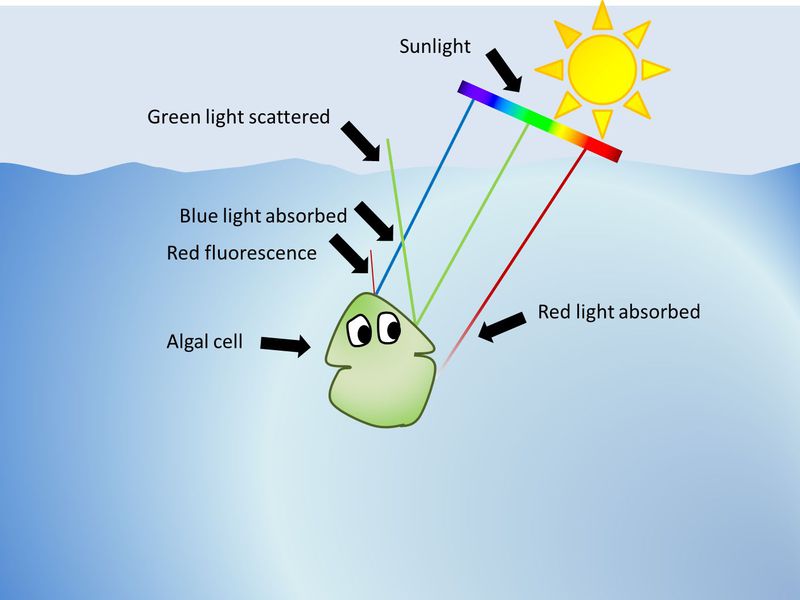What is water fluorescence?
Sunlight consists of different colours that are absorbed or scattered back from all - large and small - matter. From some materials, a minor portion of the absorbed light is re-emitted as fluorescence. The light which is used to activate fluorescence is called excitation light. Physically, the light fraction which is used for the excitation of fluorescence has a higher energetic level as the fluoresced light and therefore represents another colour of the spectrum.
This effect is also used in our everyday live. As an example black lights, ultraviolet (UV) fluorescent lamps, make many all-day materials glow in the dark. The resulting fluorescence is effectively used to visualise features which are hidden to the human eye in daylight, such as banknotes that have been printed with fluorescing dyes.
There are also many natural substances that fluoresce. Within the three major components of water- microscopic algae, coloured dissolved organic matter (CDOM) and non-algal particles, only the first two have fluorescence properties. Blue fluorescence of CDOM appears by excitation with UV rays, red fluorescence of algal cells –or in fact, of the algal pigment chlorophyll a- is excited by blue light. As these substances have different characteristics in the colour of fluorescence itself and the colour of the excitation light, water components can be distinguished by means of this method (see Figure 1).
The phenomenon which is commonly called glowing of the sea is in fact bioluminescence where light is emitted by chemical reaction, rather than by excitation with light as in fluorescence.
Learn more about why and how to measure fluorescence.
Figure 1. Sunlight consists of different colours. These enter the water and are absorbed or scattered by water itself and by substances therein. In some of these substances, such as microscopic algal cells, the absorbed light is re-emitted as fluorescence in a different colour. Algal cells absorb blue and red fractions of light, and scatter the green. Red fluorescence of algal cells is activated by excitation with blue light. This signal is weak when compared to the scattered green light and therefore not usually visible by eye. Red light is strongly absorbed by water itself. (image: courtsey of Julia A. Busch)
